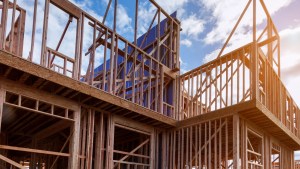Rising Lumber Prices Threaten Housing Affordability
 Despite the toll the pandemic has taken on many industries, housing has been a bright spot for the U.S. economy, particularly for single-family home construction. New single-family home sales, a measure of U.S. home building, increased 13.9 percent in July representing a 13-year high. However, lumber prices have also reached record highs, jeopardizing housing affordability across the country. Without federal government intervention, the nation’s economic recovery is at risk and the American Dream for many families will be out of reach.
Despite the toll the pandemic has taken on many industries, housing has been a bright spot for the U.S. economy, particularly for single-family home construction. New single-family home sales, a measure of U.S. home building, increased 13.9 percent in July representing a 13-year high. However, lumber prices have also reached record highs, jeopardizing housing affordability across the country. Without federal government intervention, the nation’s economic recovery is at risk and the American Dream for many families will be out of reach.
Lumber prices have increased more than 170 percent since mid-April, adding $16,000 to the price of an average single-family home. A shortage of supply is driving the price surge. When stay-at-home orders and social distancing measures were enacted by state and local governments most lumber mills closed. Mill operators projected that housing would be adversely affected by the crisis and anticipated a large drop in demand. However, better-than-expected housing demand and home building activity, along with projects being done by the DIY segment, has left home builders experiencing shortages of lumber.
Not only is housing affordability at risk, the housing industry’s potential to help lead the economy forward is limited as long as lumber remains expensive and scarce. And the ramifications for job growth are significant. Building 1,000 average single-family homes creates 2,900 full-time jobs and generates $110.96 million in taxes and fees for all levels of government to support police, firefighters and schools.
Actions at the federal level can be taken to ensure a lasting and stable supply of lumber is available for the residential construction industry to continue to build homes and enrich communities. The National Association of Home Builders (NAHB) has reached out to the Administration and Congress to urge domestic lumber producers to ramp up production to ease shortages and work with Canada on a new softwood lumber agreement that would end tariffs averaging more than 20 percent on Canadian lumber shipments into the U.S. NAHB also has asked the U.S. Lumber Coalition to boost production and has offered to work with them to address shortages in the lumber supply chain caused in part by the pandemic.
Read Iowa City Area HBA Glenn Siders’ recent letter to the editor on lumber prices and availability.
Contact your Congressional representatives and ask them to take action to address the unsustainable costs of lumber.
Washington, DC 20515
Washington: (202) 225-6576
Iowa City: (319) 351-0789
Contact: www.loebsack.house.gov/forms/writeyourrep
https://www.house.gov/representatives#state-iowa





